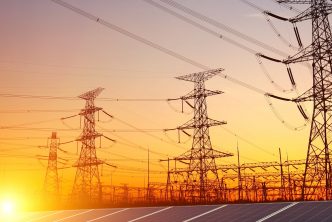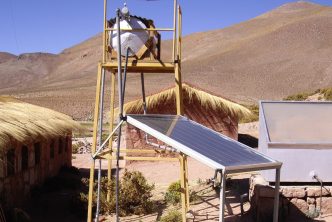The New Era
Introduction
The Nigeria Electricity Regulatory Commission (NERC) in September 2020 issued a Tariff Order(s) for the 11 Discos, changing the tariff regime to a Service Reflective Tariff mechanism. The Tariff Order required the Discos to align the tariffs they charge customers with the level of service they receive in their load clusters. Five tariff “Service Bands” were approved by NERC. The Service Bands were based on the committed minimum average hours of supply per day over a period of one month, frequency of service interruptions, duration of service interruptions and voltage levels, and other quality of service parameters. The Service Bands are given in Table 1:
Table 1: Service Bands approved by NERC.
NERC froze any tariff increase that should have applied to customers in bands D and E, who receive less than 12 hours of power supply on the average per day. The Discos were required to continue charging them their old tariffs until their service levels improved and they moved to a higher service band or until NERC said otherwise.
The NERC Order mandates service band adjustment to a lower level if a Disco fails to deliver the service level required for that band for over two months. The tariff payable by customers in the load clusters that suffer degradation in service shall be adjusted to the actual quality of service delivered.
Service Reflective Tariff
A Service Level Agreement is a contract agreement that defines the level of service – quality, quantity, availability, and responsibilities – expected by a consumer from a service provider or seller. The contract states the remedies or penalties for the supplier not meeting the service level. A remedy can be that the customers are allowed to reduce their payment based on a sliding scale based on the magnitude of deviation from the agreed level.
A “Cost Reflective Tariff” as used in the Nigerian Electricity Supply Industry (NESI) is a requirement of the Electric Power Sector Reform Act of 2005 (EPSRA), which gives the NESI foundational guidelines. Sections 32 and 76 of the EPSRA require that NERC provides one or more tariff methodologies that ensure that prices charged by licensees are fair to consumers and are sufficient to allow licensees that operate efficiently to recover the full costs of business activities, including a reasonable return on the capital invested in the business;
The Multi-Year Tariff Methodology is the name of the methodology adopted by NERC to regulate transmission and distribution prices as required by the EPSRA. The principles are used by NERC to periodically determine tariffs and make tariff orders known as Multi-Year Tariff Order (MYTO). The MYTO Order espouses the principle of Section 76(2)(a), which talks about full cost recovery of prudent costs and a reasonable return on investment. The product of this principle, used in the tariff model, is called a “Cost Reflective Tariff.” NERC determines the prudent costs and reasonable return on investments for the Transmission Company of Nigeria (TCN) and the 11 Distribution Companies (Discos). The prudent costs and allowed return level on investments are general termed as the “Revenue Requirement” of a Disco or TCN. The determined Revenue Requirement is used to ascertain the cost-reflective tariffs required to meet revenue requirements based on a given energy level.
The Service Reflective Tariff adopted by NERC is an amalgamation of the old “Cost Reflective Tariff” used in the Nigeria Electricity Supply Industry and the “Service Level Agreement” used in service-based industries like telecommunication and logistics companies. The Service Reflective Tariff implicitly introduces a Service Level Agreement principle into the Discos’ cost recovery process.
Service Reflective Tariff as a Middle Ground
Since the advent of privatization, the quality of electricity delivery across load clusters in Nigeria has been mixed: some load clusters get above 20 hours of electricity per day on average; while some clusters get less than 4 hours of supply per day, and many clusters have an average supply in between 4 hours and 20 hours. However, the areas with below-average service levels tend to be more predominant.
This predominance of poorly served clustered was one of the several reasons tariffs in the NESI could not be raised to be cost-reflective as required by the EPSRA and MYTO methodology for an extended period (2016 to September 2020). This sentiment was further confirmed in public hearings held by NERC across the Discos in February and March 2020. NERC summarized the sentiment of consumers in its Tariff Order of April 2020 as follows:
“End-use customers of the 11 Discos are willing to pay appropriate rates for services rendered by the Discos, but this willingness is conditioned on guaranteed hours of service, quality of power, and adequate metering[1]; and NOT on improvement promises (that were never implemented) that characterized previous reviews.”
The non-cost reflective tariffs charged to customers created revenue shortfalls (known as “Tariff Shortfall” ) for the Discos. Tariff Shortfalls for more than three years caused a buildup of an accumulated shortfall in revenue requirement. The Tariff Shortfall causes the Discos not to meet their market obligations creating a shortfall in payment to the Generators and other Service Providers. These shortfalls in market obligation are termed “Market shortfall.”
NERC Orders on Tariff (December 2019, April 2020, and September 2020) noted that the Federal Government of Nigeria (FGN) has committed to funding the revenue gap arising from the difference between Cost Reflective Tariffs by NERC and the actual end-user tariff payable by customers. Historically, the FGN has borne the cost of the Discos’ tariff shortfall since 2016, to a tune of over 1 trillion Naira.
However, it is expected that the FGN will gradually phase-out the tariff-shortfall support it gives to NESI through the gradual implementation of cost-reflective tariffs. The reduction in tariff support by the FGN will free up financial resources for other critical areas of the economy like infrastructure development and health care services. Moreover, the government subsidizing tariffs causes economic resource misalignment where subsidy favours the upper class of the society more than the lower class; the rich consume more of the subsidized electricity than the poor. As a result, the rich benefit disproportionately more from a non-cost reflective tariff than the poor.
The new Service Reflective Tariff ordered by NERC can be considered a balancing act to ensure that the NESI transitions to cost-reflective tariffs while not being insensitive to customers who currently experience the lousy quality of power supply from the Disco networks. As a matter of fact, Sections 76(2)(b) and (c) of the EPRSA imply that the electricity tariff charged to customers should be reflective of the “Service Level” at which the electricity was provided. Service Reflective Tariff ensures that service quality is also a factor in determining the price a consumer should pay.







